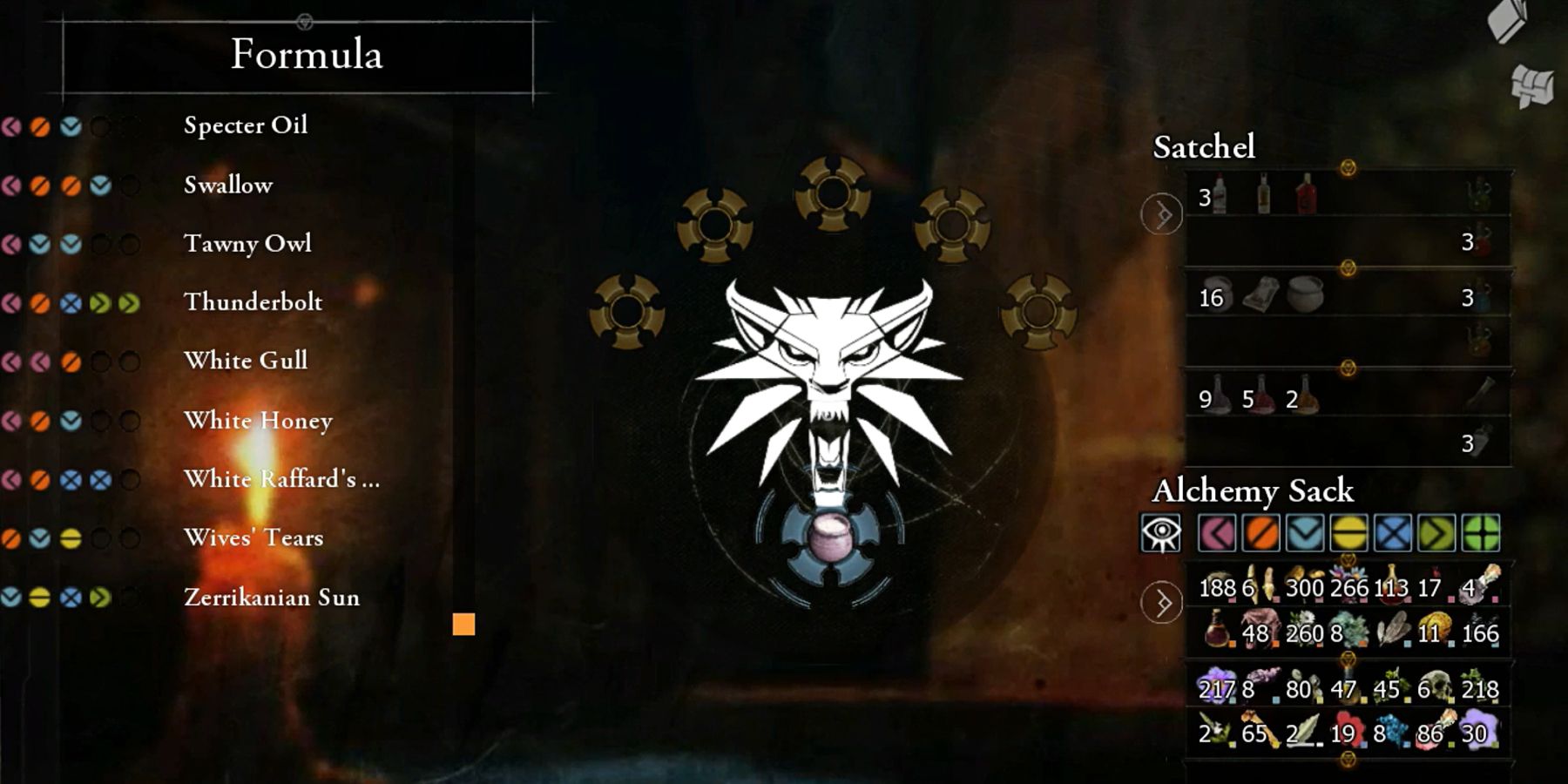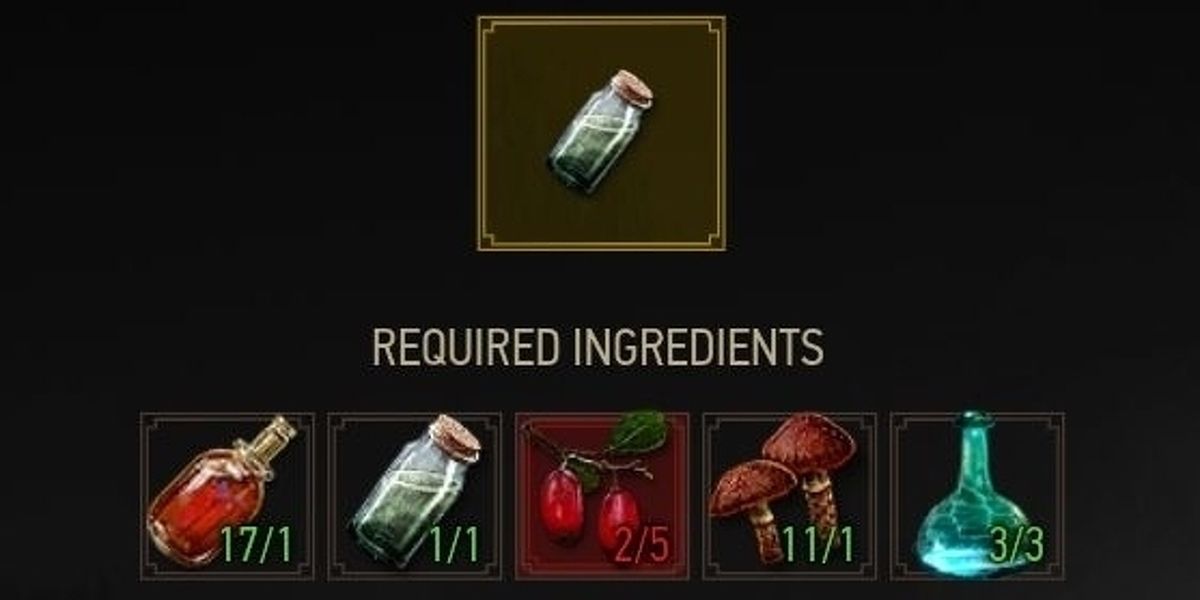With The Witcher Remake now in the works, it’s worth looking back at the original title to see what needs improving - as well as the things worth retaining. Alchemy in the original Witcher is very different from its iteration in The Witcher 3: Wild Hunt, but it might be a good idea to introduce a mix of the two systems, especially given how much potential there originally was to customize potions.
Looking past its outdated UI, The Witcher’s first alchemy system encouraged players to experiment with different substances, sometimes even throw in items that weren't part of the original formula. This provides specific bonuses, which change depending on the exact mix. This is arguably a good way to introduce more customization to The Witcher Remake’s alchemy system, allowing players to min-max their build further than what was possible in The Witcher 3.
Alchemy in The Witcher 1
The Witcher’s alchemy system isn’t the most straightforward, and its crafting mechanic is very different from The Witcher 3’s. This is because each alchemical formula requires specific proportions of primary alchemical substances. The primary substances are:
- Aether
- Hydragenum
- Quebrith
- Rebis
- Vermilion
- Vitriol
Take, for example, the Swallow potion in The Witcher, which requires one part Vitriol, one part Aether, and two parts Rebis. As long as the player has items that contain Vitriol, Aether, and Rebis, they can craft a Swallow potion. These substances are present in different herbs, minerals, and monster drops, so Rebis could potentially be found in celandine, lunar shards, and wine stones. If the player has one celandine and one wine stone, they already have part of the alchemical formula for Swallow.
What makes this alchemy system more interesting is the presence of secondary substances like Albedo, Nigredo, and Rubedo. Any given alchemical ingredient can contain one or none of these secondary substances alongside the primary ones. Often, rare crafting items in The Witcher have a secondary substance. Going back to the last example, the wine stone doesn’t have a secondary substance, but celandine and lunar shards are mixed with Nigredo and Albedo, respectively.
These secondary substances provide extra buffs to the crafted potion on the condition that the player brews it with ingredients all containing the same secondary substance. The buffs are as follows:
- Albedo – Lowers the toxicity of every potion that the player consumes in the next hour.
- Nigredo – Increases the damage that the player does by 20 percent for the next four hours.
- Rubedo – Improves the player’s vitality regeneration in The Witcher for the next four hours.
If the player wanted to create a Swallow potion with a Nigredo buff, they’d need to brew it with two celandine (Primary: Rebis + Secondary: Nigredo). They’d then need to complete The Witcher formula with items containing Aether and Rebis, respectively. Both these items must contain Nigredo as their secondary substance, otherwise the Swallow potion will only be a standard brew.
Implementing a Similar Alchemy System in The Witcher Remake
While the alchemy system of The Witcher Remake doesn’t have to copy this exact system, it may be worth reworking the feature on extra potion buffs. Doing so would increase the potential power of Witcher alchemy builds. It encourages players to go out and collect extra ingredients to bolster the power of their alchemical creations.
If anything, the alchemy system in The Witcher Remake could be a mix of old and new. It could incorporate the wide range of ingredients and substances in The Witcher 3, while also reintroducing the extra buff mechanic of the original Witcher. Perhaps the formulae could specify additional items that aren’t required but may improve its effects in different ways. This increases the customizability of alchemy builds, giving the player free rein to experiment with different potions and find unique buffs.
The Witcher Remake has been announced.



